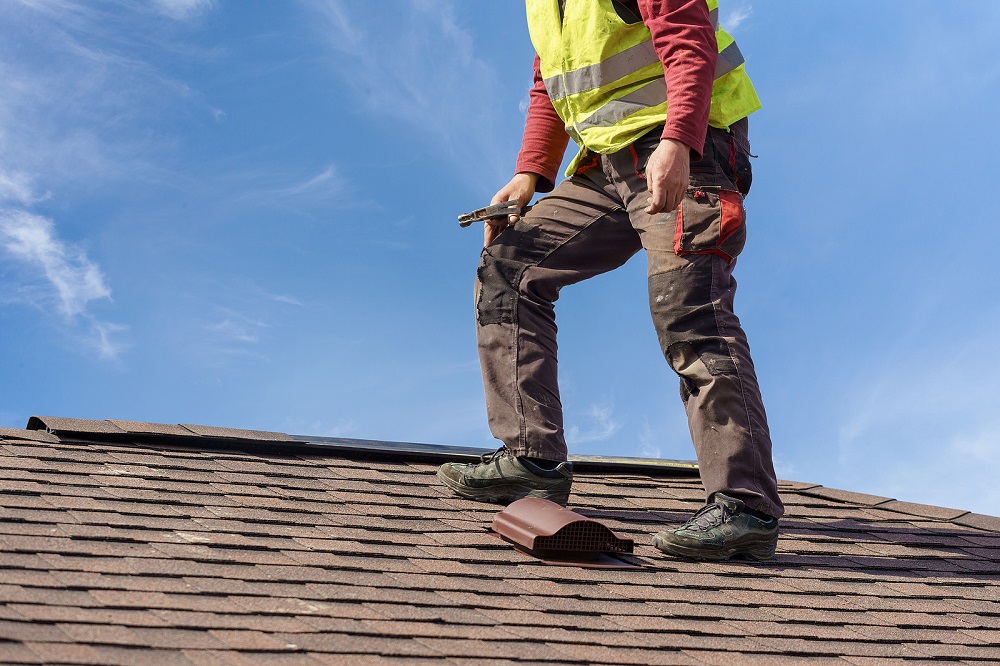Does your commercial building need a new roof? Maybe it’s a new build, and you’re picking the first roof it will have. In either case, you need to be able to compare different types of commercial roofing.
There are many materials and designs available, but before you decide anything, you’re going to need to choose between flat versus pitched commercial roofs. There are good reasons for either choice, so it might help to learn more about both roofing styles and how they compare.
Flat Roofs for Commercial Buildings: Simple and Easy to Install
Flat roofs are appropriately named. These are roofs that don’t have a protruding pitch in the middle. Flat roofs can be sloped, but the slopes are usually very mild.
Whether there is a slope or not, the best flat roof materials tend to differ from your common pitched roof. Since flat roofs collect precipitation, they tend to be much more waterproof than pitched roofs, and that comes from the different materials that are common in flat roof construction.
Overall, flat roofing design leads to specific pros and cons that you should consider.
All of the Advantages
Starting with the pros, flat roofs require less material (on average) than pitched roofs that cover the same square footage. It’s a result of the geometry, and the extra material comes with consequences. Flat roofs are simpler to design, easier to install, and faster to set up. This makes them cheaper (again, depending on the material) and less disruptive to business operations. That simple factor is why so many commercial buildings have flat roofs.
Additional benefits of flat roofs include a lower overall weight — which is necessary for some designs — and the potential for usable rooftop space.
Downsides of Flat Roofing
Despite the many pros, there are good reasons not to get a flat roof. The first is lifespan. Flat roofs are prone to collecting precipitation. This causes water to pool up most of the year, and it can lead to a collection of snow when winter storms hit. Not a common problem in Texas, but after the Snowpocalypse, we all know that they can and do occur.
In Dallas, the bigger concern is hail, which flat roofs tend to handle worse than pitched roofs. Each of these issues forces flat roofs to require more maintenance than their pitched counterparts.
Flat roofs are also less energy efficient than pitched roofs. They can’t accommodate an attic, for example, and attics provide great insulation. Because of all of these factors, flat roofs often prove to be less cost-effective over a long period of time.
Pitched Roofs: An Aesthetically Pleasing Option That Prevents Water Damage
For the sake of clarity, pitched roofs are roofs that angle up to a point towards the middle of the building. They are standard on residential housing, and they are used in many designs for commercial spaces.
There’s a minimum pitch or slope for an asphalt shingle roof, which is what most people think of when they think of roofing materials.
The primary function of a pitched roof is to create runoff for precipitation. Pitched roofs prevent water from pooling anywhere on the roofing material, and in cold climates, they also limit how much snow can sit on the roof before it slides off. (Again, not something you associate with Texas, but after the Snowpocalyse, it’s clearly worth considering.)
So what are the benefits and drawbacks of pitched vs flat commercial roofs?
What Makes Pitched Commercial Roofs Appealing
You’ve seen plenty of pitched roofs, and that’s because they are good for many reasons. For starters, pitched roofs are typically considered more aesthetically pleasing than flat-topped buildings. They also accommodate more versatile design options (such as building storage in an attic).
Pitched roofs are also great for how they contrast with flat roofs. Pitched roofs tend to last longer, provide more tensile strength, and require less maintenance than flat roofs. Overall, they’re often the economic choice — if you can afford the initial cost of installation.
Why Pitched Roofs (Versus Flat Roofs) Aren’t Always the Right Choice
Where pitched roofs shine less is the design. It takes more material to make a pitched roof because of the angular shape.
That makes installation much more costly and time consuming. The process is more disruptive to business practices, and the extra weight creates upper limits on how much area a single pitch can cover. This can complicate the design and pile even more time and money onto the project.
The other big drawback to pitched roofs is that they aren’t always viable. There are plenty of commercial building designs that simply cannot be covered by pitched roofs. When that happens, you don’t really get to make a choice.
Flat vs Pitched Commercial Roofs: Both Have Advantages and Disadvantages
Flat roofs and pitched roofs both have some pretty clear benefits, but at the same time, both have drawbacks as well. The best way to make sure you’re making the right choice is to bring in a professional to help.
You can see that there are compelling reasons to choose a flat or pitched roof. The good news is that Bert Roofing can service both options.
When you need a commercial roof, we’re the contractors who can install it for you. Whether you’re replacing a roof or starting a new build, we’re ready to do the work.
Give us a call, and we’ll help you make sure you have a roof that’s effective, durable, and nice to look at.

